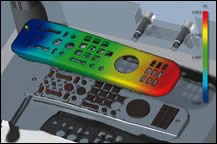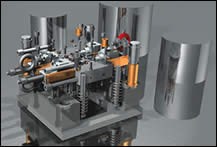Five Reasons to Work with Integrated CAD/CAM Software
Nowadays, we hear a lot about integrated CAD/CAM packages and many people wonder whether or not they should buy an integrated package or separate CAD and CAM packages. Here are just some of the reasons why it makes more sense to work with an integrated CAD/CAM package.
Obviously a completely integrated package from one developer means that the part, the tool, the drawings and the machining are all linked, all of the time, so changes and improvements are handled with ease. To fully understand the benefits of a complete one-package solution we need to see what happens when we explore the alternative: to use a number of separate packages from different developers and try to get them to work seamlessly together.
Featured Content
1. Interfacing
Whenever two or more software packages need to communicate there is always room for error. Sometimes it may be a minor problem, but often the problem will be more severe. Each software supplier writes their own code to handle complex geometry. If there are any differences in the way one or the other describes a lofted surface for example, it means you will not get exactly the same shape as was intended. With an integrated product, with both CAD and CAM, there is absolutely no possibility of transfer errors.
2. Data Loss
In some integrated CAD/CAM packages you may add numerous forms of additional information onto your part models—including tolerances, surface finish requirements, machining methods, etc. All of this information can be automatically read by the integrated CAM. However, when transferring model data between two separate products this information is lost.
3. Version Lag
This is a very common problem and it happens when one of your software suppliers releases a new version of its software, meaning your other package is now incompatible and will no longer work. You cannot afford to lose half of your capability so you simply have to put the new version back on the shelf until the second supplier catches up.
4. Fragmented Support
As long as you have two or more suppliers then each of them are free to play the blame game when something goes wrong. Is it a CAD problem or a CAM problem? Another aspect of this problem is what happens when you find a bug in the software. If it’s a bug that impacts both packages, you have twice the workload in reporting and monitoring the result.
5. Future Direction
No control. As each software company develops its products, they do so to suit their own goals and requirements. Ultimately this could affect the level of compatibility with other systems.
![]()
RELATED CONTENT
-
Predictive Manufacturing Moves Mold Builder into Advanced Medical Component Manufacturing
From a hot rod hobby, medical molds and shop performance to technology extremes, key relationships and a growth strategy, it’s obvious details matter at Eden Tool.
-
Can You Recommend Any Books on Mold Design and Manufacturing?
Mold industry pros rally to offer a list of resources in response to a fellow SPE member’s call for assistance.
-
Going Against the Grain: Low Cavitation Vs. High Cavitation
An injection mold expert speaks out against high-cavitation molds. There is a time and a place for them, he contends, but they should not be chosen for financial considerations alone.




.JPG;width=70;height=70;mode=crop)











